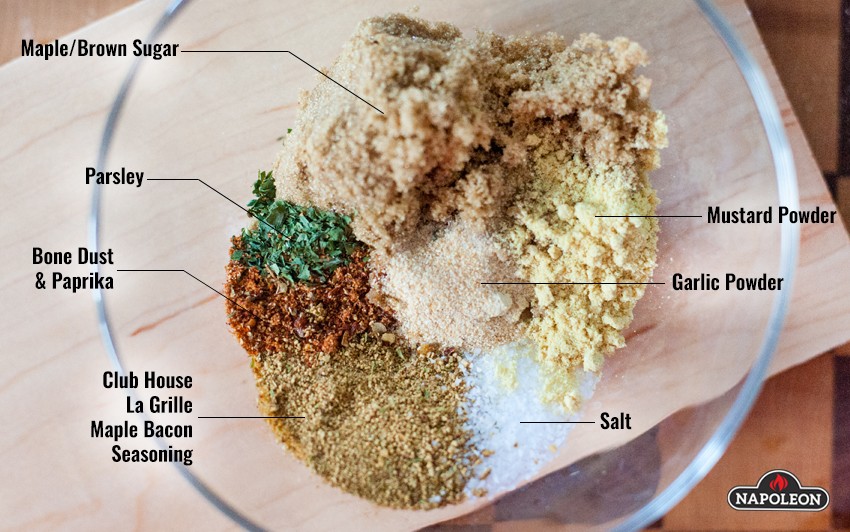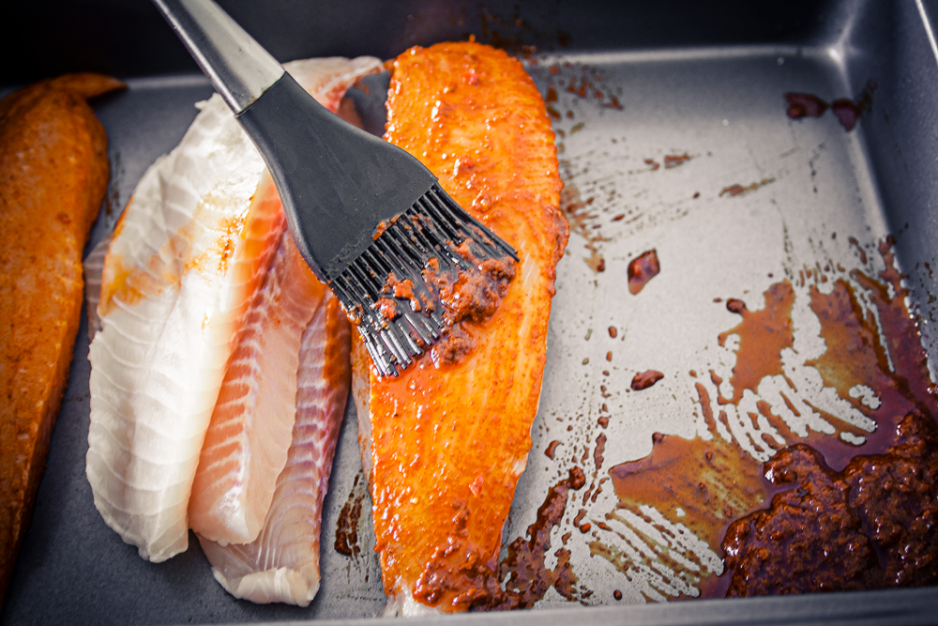
The Science of BBQ - Wet Vs. Dry Rubs
One’s opinions about barbecue can be as hotly debated as politics are. That is once again proven true as I look into wet and dry rubs, and when to use which one. Not only is the terminology hotly debated, but so is when and where to use both! There is a bit of science behind spices and seasoning when it comes to wet vs. dry rubs as well. Let us not sit on the surface of this topic but penetrate deeply like the flavors you like to use, and explore the science of BBQ, wet vs. dry rubs.
Salt and pepper are ideal for bringing out the beauty of a steak or taking your veggies to the next level. Salt and pepper can be a part of your next homemade rub but are fully capable of standing on their own to flavor your favorite foods but are not in and of themselves considered a rub.
Dry Rubs
You are probably more familiar with a dry rub than you think. They can be homemade or the ones you get premixed from the grocer. They contain only dry ingredients and enhance food by creating a crust or bark as well as adding great color to whatever you are cooking.
Wet Rubs
Wet rubs are nearly the same as a dry rub, however there is a wet component added. Vinegar, alcohol (beer, bourbon juice), vinegar, oil, and even mustard can be used. The thought with a wet rub is that it will adhere the dry ingredients to the meat better.
What's In a Dry Rub?
Sugar and spice and everything nice. Dry rubs are a balance of flavors – but that doesn’t mean that you should use the equal amounts of spices and herbs in creating them.
Salty Flavors
Salt is the greatest flavor enhancer known to food. Salt is also one of the only additives in a rub that can penetrate past the surface of meat. Salt will dissolve in any available moisture pulling said moisture from the meat, melting, and then reabsorbing into the meat. It can penetrate up to an inch within 24 hours of application and also helps to tenderize the meat it is applied to. However, salt should generally be applied in a ratio with regards to the weight of the meat. You could, given salt’s drying, denaturing, and tenderization properties, apply the salt first and allow the meat to sit for at least an hour before you consider applying the rest of the rub ingredients.
Savory Flavors
Flavors that are pleasant, neither sweet, overly salty, bitter, or sour; savory flavor comes from amino acids known as glutamates. (Learn more about Glutamates in our Science article Why Grilled Food Tastes Good) They produce a pleasing fragrance and flavor before and after being heated and come in the form of carraway, fennel, garlic, onion, basil, cinnamon, rosemary, and dill, and many others.
Spices and Herbal Flavors
Not to be mistaken with spicy flavors, spices and herbs add an earthy note to your rub mixtures through parsley, oregano, sage, cumin, and similar green herbs. They come in both fresh and dried format. Paprika is popular in many dry rubs for barbecue because of the color it adds when foods are slow cooked or smoked – it’s integral to a deep colored bark.
Spicy Flavors
These flavors bring the feeling of heat. They add a thrill to the flavors you are imparting your dish. They have a tendency to become overpowering so use caution when adding them to the mix. The simplicity of freshly ground black pepper, chipotle or other powdered hot peppers, and even mustard, ginger, and horseradish can add their own distinctive attribute to a rub.
Sweet Flavors
Essential to adding balance to your rubs, sweetness comes out in the form of sugar. It doesn’t take much in the long run. It’s a fantastic flavor booster and thanks to caramelization it helps to form crust and brown, however, if not carefully managed, can burn quickly and easily instead of bringing a pleasant flavor.
Try this recipe for The Easiest Charcoal Rib Recipe Ever using a delicious dry rub
Get more flavor from your ingredients. Bloom spices by heating them in a dry pan over low heat. You don’t have to do this process individually for each flavor, if they’re going into the rub together, they can be bloomed or steeped together. It only takes a couple of minutes, and your nose will tell you when they’re ready. Go a little further by blooming or steeping them in warm oil (ideal for wet rubs) just add enough oil to the pan after heating to create a thick paste. Fat-soluble spices – the ones that get better in oil - include thyme, rosemary, sage, savory and chili flakes.
What's In a Wet Rub?
Take all of the important things in a dry rub, and then add a liquid. You just need enough liquid to create a thick paste from the rub ingredients. Try a small amount of bourbon, honey, and infused oils. You can even use mustard, ketchup, or mayonnaise. Remember that the sugars in honey and alcohol can burn if the heat is above 350°F.
Want to use a wet rub? This recipe for Tilapia Tacos.
How Do I Use a Wet or Dry Rub?
Wet and dry rubs are easy to use. Rub them onto and into the meat, every surface, full coverage. For dry rubs, this can be done up to 24 hours in advance. If you have added salt to the rub, the salt will work its magic while the surface of the meat dries out making for crispier skin or a better bark when smoking. Do not wrap your dry rubbed food in plastic wrap, it will create and trap moisture turning everything into a wet rub. Upon removal the plastic wrap will remove the rub that you put on as well as the moisture will prevent a good sear if you are cooking this food hot and high. Instead, place your rubbed meat onto a rack in a tray and allow things to dry up.
Let’s sort one thing right now. Wet rubs are not a marinade. They can go onto your food up to an hour before cooking and perform exactly like a dry rub, only moist-er. Like mentioned earlier, you are looking for a paste, not a liquid marinade when you make a wet rub. When using wet rubs, it is ideal to cook using indirect heat or low and slow methods because wet rubs can drip and cause a flare up and the sugars present can burn if they get too hot too fast. Unlike dry rubs, you can wrap wet-rubbed food in plastic or leave on a tray before cooking.
When Do I Use a Wet or Dry Rub?
This is where things get a little wibbly-wobbly. You can use both of these whenever you like. Dry rubs are great for everything. Use them on skin-on chicken and allow them to air dry for a crispier skin. Dry rubs are great on their own but can be spectacular when finished with a sauce in the case of ribs, brisket, and pulled pork. Wet rubs are fantastic when you are cooking low and slow – again, brisket and pulled pork. This allows your food to develop a unique bark and allows the sugars to caramelize instead of burn.
Whether you’re a fan of dry rubs or wet, these recipes contain fantastic flavors, try these dry rubbed Smoked Sirloin Sandwiches or this super succulent Portugal Chicken.
What is the message? What is the takeaway? Salt and pepper are seasoning, not rub, and perfect for something simple. Dry rubs are ideal if you need a sear but works just as well when you smoke or slow cook. And finally, wet rubs are perfect if you are going the slow route for cooking. What is your preference? Share your secret technique, favorite rub recipe, or just your success stories on our social pages like Facebook and Instagram, using the hashtags #WetRub or #DryRub and #NapoleonGrills.
Happy Grilling!








